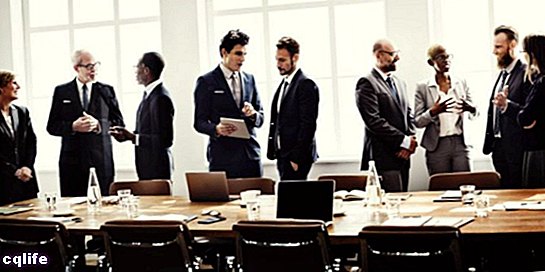- What is an organization?
- Components of an organization
- Types of organizations
- Examples of organizations
- Organizational culture
We explain what an organization is and what types of organizations exist. Also, components of an organization and real examples.

What is an organization?
An organization is a social system formed by agroup of people focused on a objective in common to achieve within aweather, space Y culture determined. In every organization there are rules, goals and axes that help to achievemission.
There are characteristics that differentiate organizations from each other: such as size, area of influence, use of economic resources,humans, technological, natural, among many others. The mission to fulfill can generateProfits or not (the latter is the case of NGO).
The members of an organization are usually ordered hierarchically, establishing norms and rules. An organization can only function if among the people that compose it there is thecommunication and the intention to act in coordination towards the goals or objectives to be met.
The different organizations generate work and aculture own, through its symbols, images and standards.
See also:Organizational development
Components of an organization
There are certain elements that make up most organizations, these are usually:
- An end. Target or purpose to be fulfilled for which the organization was born. It must be clearly defined and known by all members of the organization. For example: Produce safety footwear.
- Members. Individuals who distribute the activities or work necessary to fulfill the goals or objectives. For example: The managers and employees of a shoe factory.
- A group of tasks. Activities carried out by the members of the organization to achieve objectives. For example: The division of tasks within the factory for the manufacture of footwear.
- Means. Instruments or goods necessary to carry out the objective of the organization. For example: investment and the machinery necessary for the manufacture of footwear.
- Rules. Instructions, rules and instructions that guide the actions of the members of the institution. For example: Safety regulations when handling machinery within the factory.
Types of organizations

There are local, national, multinational, global and international organizations.
Organizations can be classified according to various criteria. Among the most representative are:
According to the profit:
- For-profit organizations. They are groupings of capital private companies that trade goods or services.
- Non-profit organizations (NGOs). They are social groups whose purpose is to meet the needs of thecommunity and they have financial independence, that is, they do not depend on anygovernment.
- Organizations with administrative purposes. They are those organizations created by a government to provide services to the community.
According to the structure:
- Formal organizations. They arise deliberately and a pattern of relationships is established between their components for the effective achievement of the objective.
- Informal organizations. They arise spontaneously due to the activities and interactions of the participants.
According to the property:
- Private organizations. They are those in which the capital is private and not Condition.
- Public organizations. They are those in which there is government participation.
According to its size:
- Small organizations. They are those that have between 10 to 49 members.
- Medium organizations These are those with between 50 and 199 members.
- Large organizations. They are those that have between 200 and 1000 members.
Examples of organizations
Some examples of organizations are:
- NGO: Greenpeace, Doctors of the world, Red Cross.
- Companies: Toyota, Kodak, Nestlé.
- Schools and universities: Autonomous University of Barcelona, University of Buenos Aires, University of Chile.
- Sports clubs: Club Atlético de Madrid, Club Deportivo Guadalajara.
- Churches: Church of Jesus Christ of Latter-day Saints, Catholic Church, Evangelical Church.
- Hospitals and clinics: Pablo Tobón Uribe Hospital, British Hospital of Montevideo.
- Unions and confederations: Confederación de Trabajadores de México, Union of truck drivers, Unión Obrera Metalúrgica.
- Political parties: Colombian Liberal Party, Radical Party, Conservative Party.
- Banks and finance companies: Banco Santander, Banco Itaú, Banco de Chile.
Organizational culture
Organizational culture is made up of a set of beliefs, standards and values that define the identity of an organization and mark the course towards the fulfillment of the objectives or proposed goals.
It is important that each organization determines its rules and regulations according to the mission, history, vision and values that identify it. The elements that make up the organizational culture are defined from the origin of the organization (they can be updated over time) and it is expected that they will be known and respected by all members of the institution.
Organizational culture is usually made up of elements such as Coexistence rules within the organization, the relationship with the community, the relationship with the environment, the identity, values, among many others.
